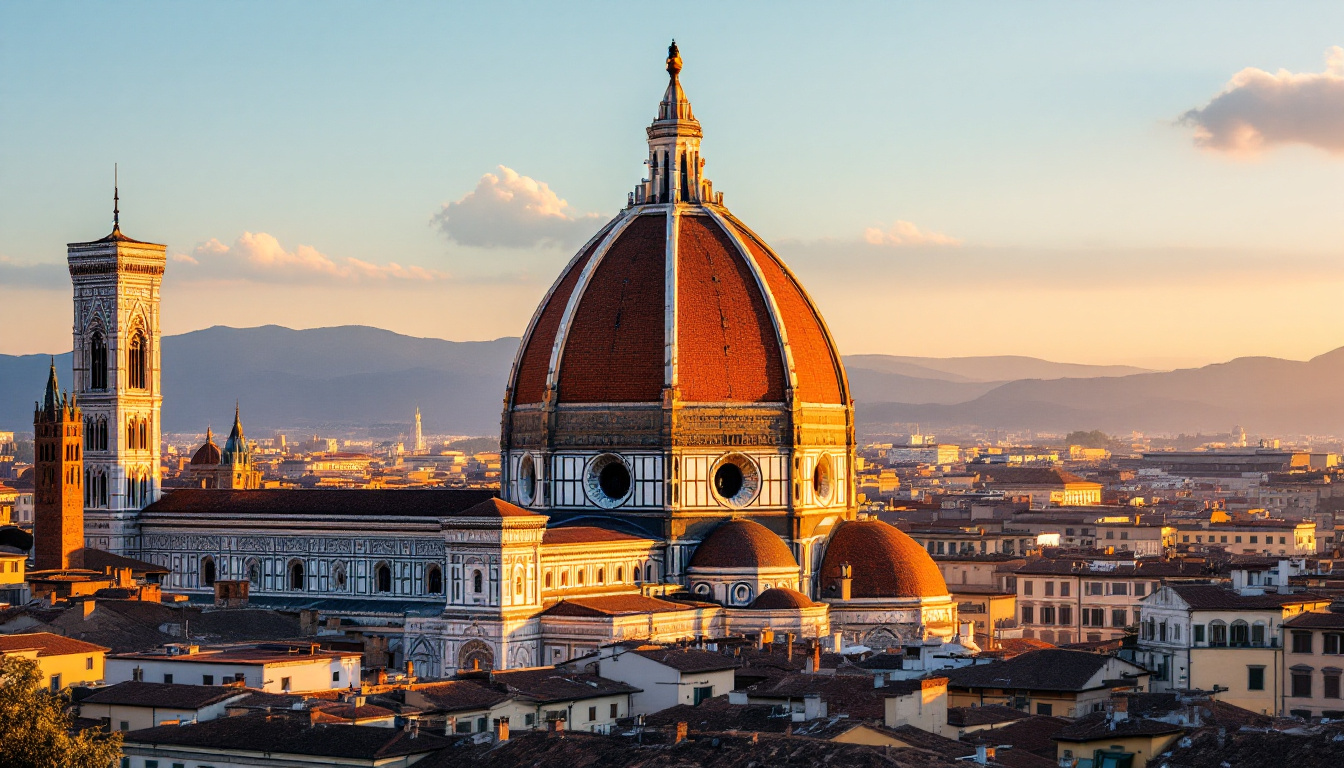The morning light strikes Brunelleschi’s dome with a golden glow that seems to transform the colossal structure into a beacon of Renaissance ambition. This architectural marvel—the largest brick dome ever constructed—continues to dominate Florence’s skyline just as it has for nearly six centuries, a testament to human ingenuity and artistic vision that defines this extraordinary Tuscan city.
Where genius was born: Florence’s Renaissance revolution
Florence didn’t merely participate in the Renaissance—it created it. This compact city along the Arno River nurtured artistic giants like Michelangelo, Leonardo da Vinci, and Botticelli while the powerful Medici family funded their revolutionary work. Walking these narrow streets feels like moving through an open-air museum where creativity forever changed human expression.
“Florence represents a moment when humans recognized their own potential,” explains art historian Eleonora Rossi. “The Renaissance wasn’t just artistic—it was a complete reimagining of what people could achieve.”
The Duomo: engineering marvel that challenged the impossible
When Filippo Brunelleschi completed his dome in 1436, he solved an engineering problem that had stumped architects for decades. The massive structure spans 144 feet without flying buttresses, using an innovative double-shell design and herringbone brickwork that still astonishes modern engineers.
Climbing the 463 steps between the dome’s inner and outer shells offers a rare glimpse into Renaissance innovation and rewards visitors with panoramic views of terracotta rooftops spreading toward distant Tuscan hills. Much like ancient cities carved from rose-colored rock, Florence’s architectural achievements seem to defy physical possibility.
Beyond the tourist trail: Florence’s hidden artistic treasures
While tourists crowd the Uffizi and Accademia galleries, savvy travelers seek out the city’s lesser-known masterpieces. The Brancacci Chapel houses Masaccio’s revolutionary frescoes that introduced perspective to Western art. Meanwhile, the intimate Museo Bardini displays its collection in a serene blue setting that contrasts with Florence’s more hectic attractions.
The San Marco Monastery contains monk cells decorated with Fra Angelico frescoes—deeply spiritual works created not for public display but for private devotion. These quiet corners provide respite from crowds while revealing Florence’s artistic depth.
Oltrarno: where artisans keep Renaissance traditions alive
Cross the Arno River to discover Florence’s artisan heart in the Oltrarno district. Here, third-generation craftspeople work in centuries-old workshops, creating leather goods, mosaics, and hand-marbled paper using techniques passed through generations.
“We don’t just preserve techniques—we keep the Renaissance spirit of innovation alive,” says Paolo Giannini, whose family has restored antique frames since 1890. “Each piece combines tradition with something new.”
This authentic creative energy echoes what draws visitors to tiny Italian villages with rich cultural traditions—a connection to craftsmanship that defies mass production.
Tuscan flavors: Florence’s culinary renaissance
Florence’s gastronomic scene celebrates simplicity and quality ingredients. Traditional trattorias serve bistecca alla fiorentina—massive T-bone steaks grilled over oak coals—alongside rustic ribollita soup made from leftover bread and seasonal vegetables.
The Sant’Ambrogio market offers a sensory immersion where locals shop for regional specialties. Unlike destinations overrun with tourists, these authentic food experiences connect visitors with genuine Tuscan culture.
Secret viewpoints: Florence’s breathtaking perspectives
While crowds gather at Piazzale Michelangelo, informed visitors seek elevated views from San Miniato al Monte church or the lesser-known Bardini Gardens. These vantage points offer magical perspectives without the chaotic crowds found at more famous lookouts.
For an intimate sunset experience, the rooftop terrace at the Oblate Library provides stunning dome views alongside locals enjoying aperitivo—proving Florence still guards moments of authenticity even as one of Europe’s most visited cities.
The city that transformed human consciousness
Florence’s greatest gift isn’t just its art but how it forever changed human perception. Standing before Botticelli’s “Birth of Venus” or beneath Brunelleschi’s dome triggers a profound realization—these works redefined what humans thought possible, much like Picasso’s hidden sanctuaries inspired artistic revolution centuries later.
“Florence doesn’t simply display beauty,” says museum director Marco Ferri. “It shows us how beauty transformed civilization.”
This Tuscan jewel continues its Renaissance legacy not as a frozen museum but as a living laboratory where past genius inspires present creativity—inviting modern visitors to experience the same transformative magic that changed our world five centuries ago.
